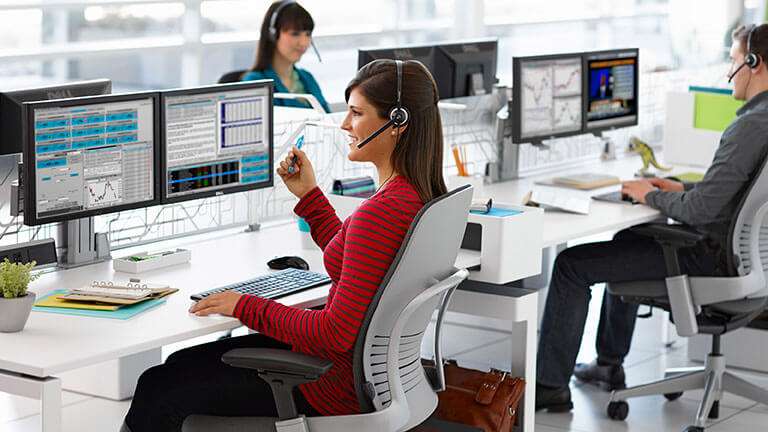By Joe Gammons
There is something to be said about uniformity in the office.
Businesses with matching desks, cabinetry and colors look more professional than those with a hodgepodge of office furniture. Clean lines and complementary colors create symmetry, balance and cohesiveness that can improve efficiency and exude a sense of purpose.
But what about office chairs?
Some offices have matching chairs. Some do not.
A variety of factors come into play, including personal preference, cost, durability and ergonomics. Below are common arguments for and against matching chairs in the office:
Arguments for matching chairs
Property owners often stage homes to enhance their appearance and appeal to buyers. Staging includes decluttering, cleaning and positioning furniture and accessories to show off a space in its best light.
Business owners have similar reasons to “stage” a working office. A functional, organized office gives a strong first impression to potential clients and customers, much like an employee’s appearance helps make a good first impression.
Corporate board rooms, for example, almost always feature matching chairs. These executive chairs aren’t just a place to sit; they are a statement piece, almost like the conference table itself.
Workplaces with more than five to 10 desk-based employees often have matching furniture, including desks, bookshelves, filing cabinets and storage solutions. Matching chairs ensures businesses won’t have instances of “chair envy” among employees who are higher-ranked or have more seniority. Every employee, from managers to interns, has the same chair.
Purchasing chairs is an investment, but one that pays dividends through satisfied, comfortable and productive employees.
Arguments against matching chairs
Well-built office furniture can last decades, even under daily use. Office chairs, however, have a much lower life expectancy. Five-year limited warranties are common. Over time, seat padding can lose its cushion. Wheels can break. Fabrics can tear or crack.
Chairs don’t wear down at the same rate, though. Businesses might need to replace a chair after three or five years, but at a certain point, manufacturers will no longer have that specific model in stock. Businesses can buy something similar, but it won’t be an exact match.
The main argument against matching chairs is personal preference. Not every employee feels comfortable in the same chair. An employee who is 6’5” and 250 pounds, for instance, has a different sitting experience than someone who is 5’0” and 100 pounds. Finding the right chair includes multiple elements:
- Chair height: adjustable so feet can reach the floor.
- Tilt of seat back: angled or upright.
- Lumbar support: firm to support good posture.
- Cushion material: leather, synthetic leather or cloth.
- Armrests: position at proper height to align with keyboard.
Additionally, many desk-based employees are opting for balance ball chairs, which can increase core strength and posture while sitting. Others prefer a standing desk or height-adjustable desk, which offers health benefits like lowering blood sugar levels, back pain, and risks for heart disease and obesity.
No matter which route an employer takes, the key is finding an ergonomic office chair that keeps employees comfortable, healthy and productive.


